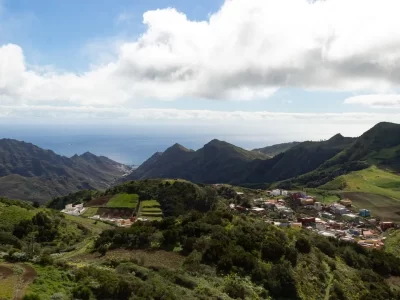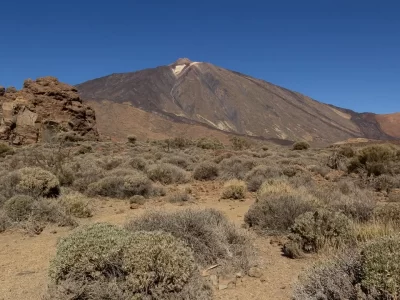Like the polygraph test of a pathological liar, the high peaks and low valleys of La Gomera mountains stretch as far as your eyes can see.
Measuring only 370 square kilometres (143 square miles), the second smallest of the Canary Islands is big in outdoor adventures. The island, including its marine park, is a Biosphere Reserve home to several endemic species and to a rugged landscape that is easy to admire thanks to the many viewpoints built along the sinuous roads.
I visited La Gomera while I was in Tenerife and the only thing I regret is not staying longer in this oasis of tranquility.
Disclosure: This post contains some affiliate links. If you make a purchase through those links I will earn a commission at no additional cost to you (zero, nada). To check the full disclaimer, click here.
These are some highlights of La Gomera landscape that will make your trip unforgettable.
Table of Contents
The Garajonay National Park
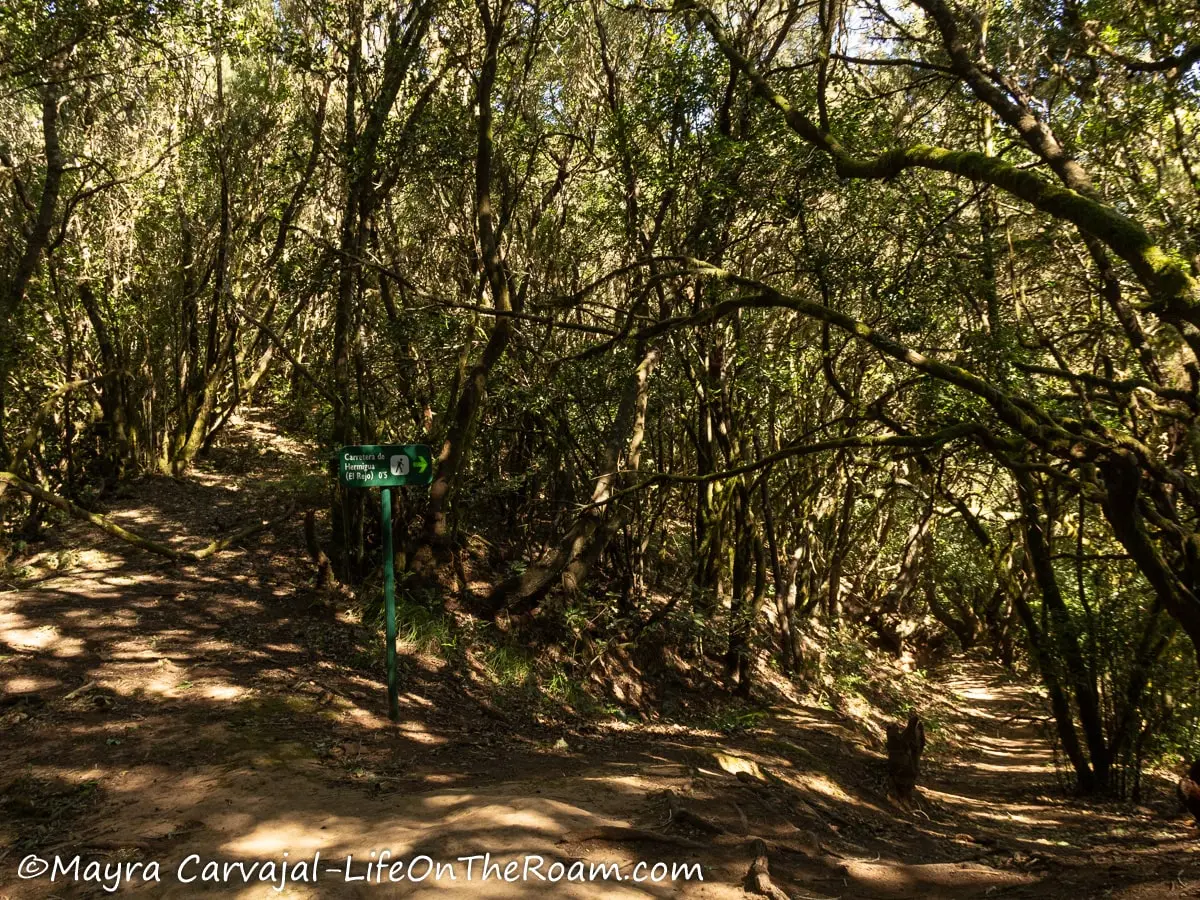
The Garajonay National Park -inscribed as a Natural Asset on the UNESCO World Heritage List- crowns the top of La Gomera with a dense laurel forest, also known as laurisilva. In addition to being a beautiful site, it also helps sustain life on the island. When the clouds engulf this ancient forest, the moisture that accumulates on the leaves and branches falls to the ground creating springs.

Of all the springs that provide freshwater to La Gomera, as many as 74 come from Garajonay.
The forest is also home to species that are unique to the island.
When I entered the forest I felt as if I had crossed into a different dimension. The intertwining branches create natural tunnels that cast a sense of mystery on the paths, similar to the Anaga Rural Park in Tenerife.
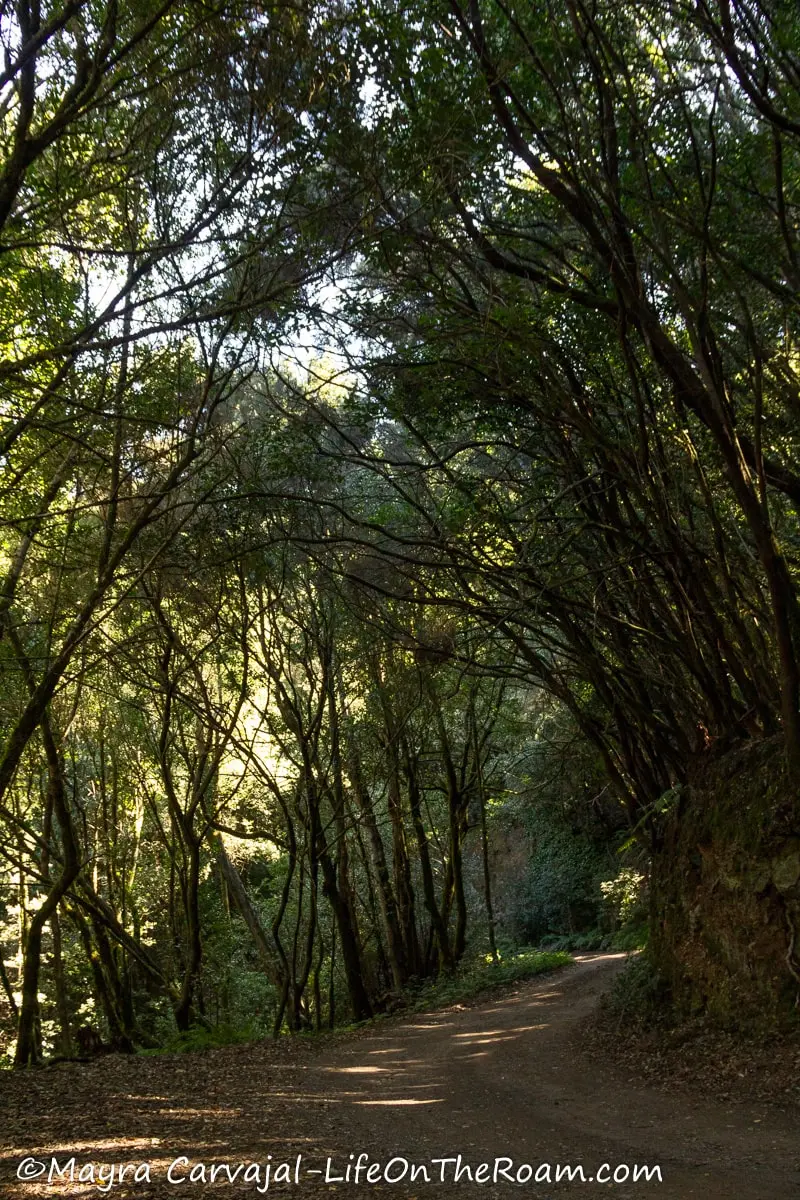
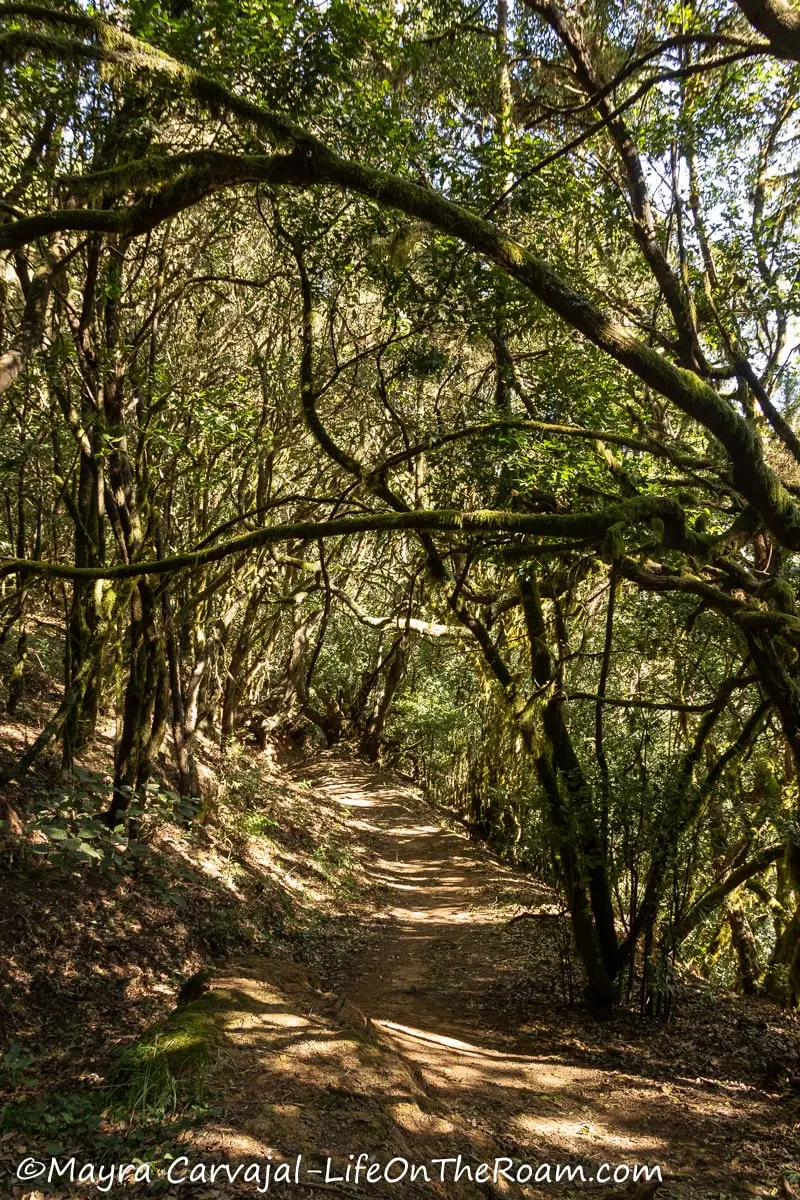
There are several hiking trails in Garajonay, with varying lengths and degrees of difficulty. You can try Route 1 (El Bailadero), an easy trail that takes around 30 minutes, or the more demanding Route 11 (La Meseta de Hermigua-Chorro del Cedro), a medium difficulty trail that takes around 4.5 hours.
Inside the park we had a picnic at Laguna Grande, a recreational area with basic facilities where you’ll find picnic tables and a big playground for kids. A good place to rest and enjoy your packed lunch.
La Gomera Marine Park
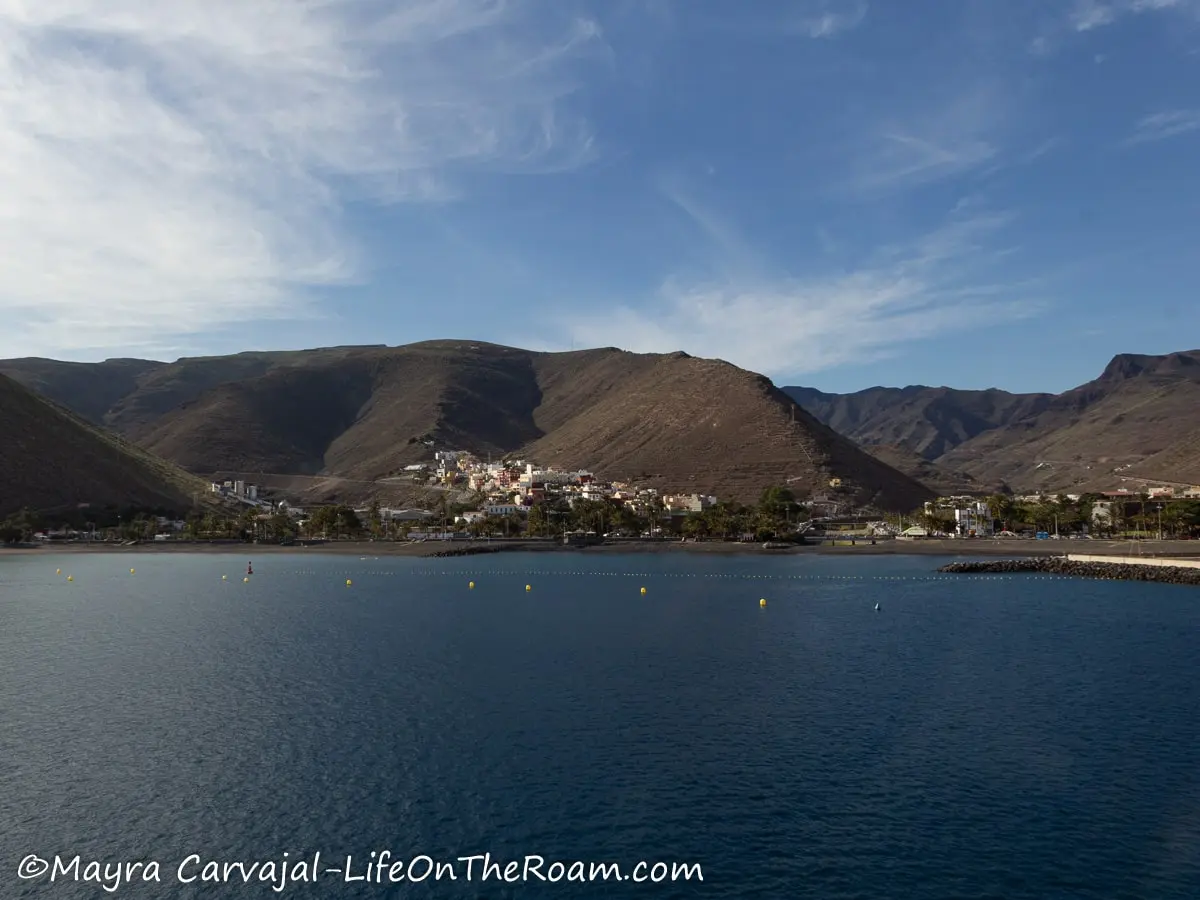
You can jump on a boat and enjoy the rugged landscape of La Gomera from the ocean and also get the chance to see whales and dolphins with less crowds than the tours on the other Canary Islands.
Check out this 3-hour whale watching tour that includes drinks and snacks and a swimming stop.
Book this tour, with a rating of 4.6/5 based on more than 70 reviews
La Gomera Viewpoints
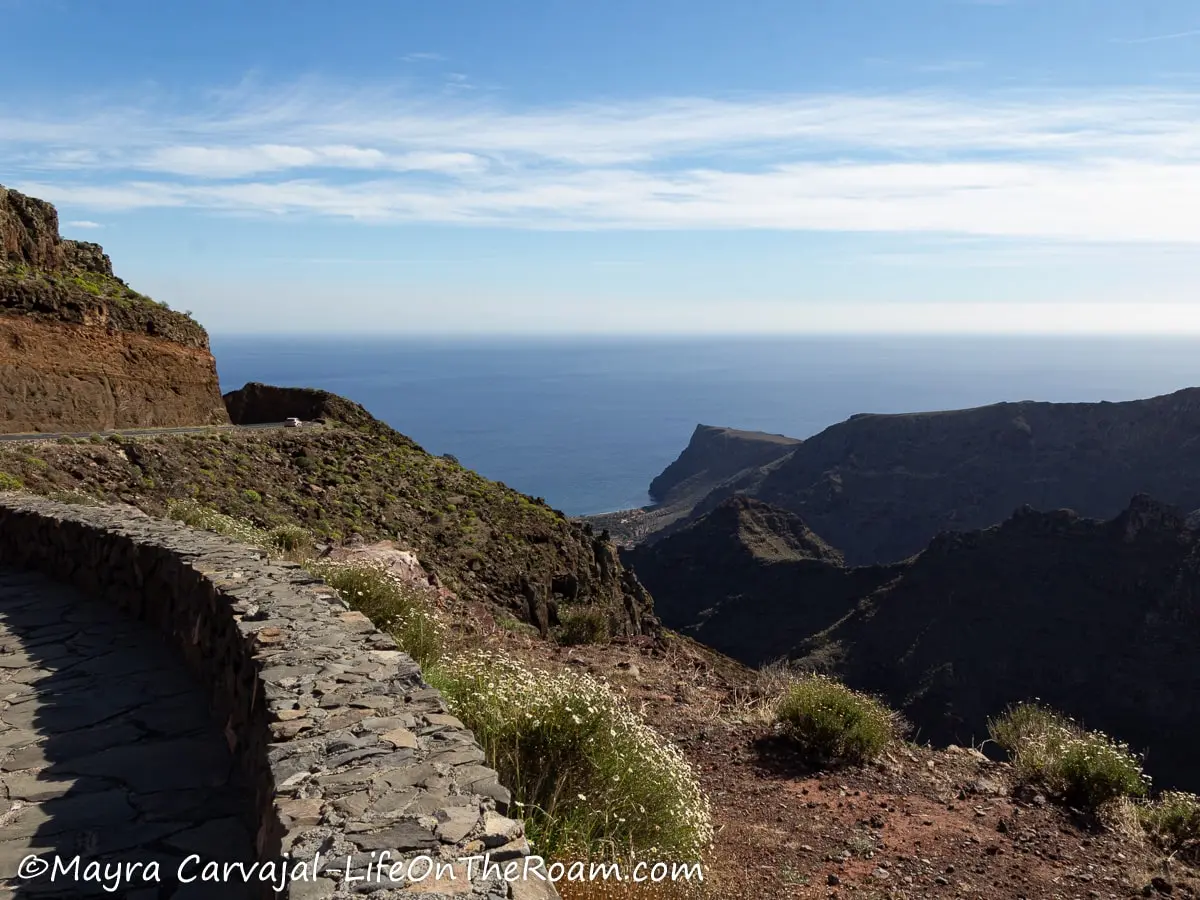
Stop at La Gomera lookouts (a mirador) to bask in gorgeous views, look at natural monuments, and learn about the culture and history of this place thanks to the site signs. There are more than 30 viewpoints on the island from where you can access trailheads to explore the heart of the island.
Here I show you the scenery from the seven I visited (listed on the map below).
El Sombrero Viewpoint

This is a good point to catch a view of San Sebastian de La Gomera with the island of Tenerife and its iconic Mount Teide peak in the distance.
One of the first things I noticed about La Gomera was the terraces built in the hills and at El Sombrero lookout you can take a good look at them. According to the site sign, people built them to deal with the limited amount of land.
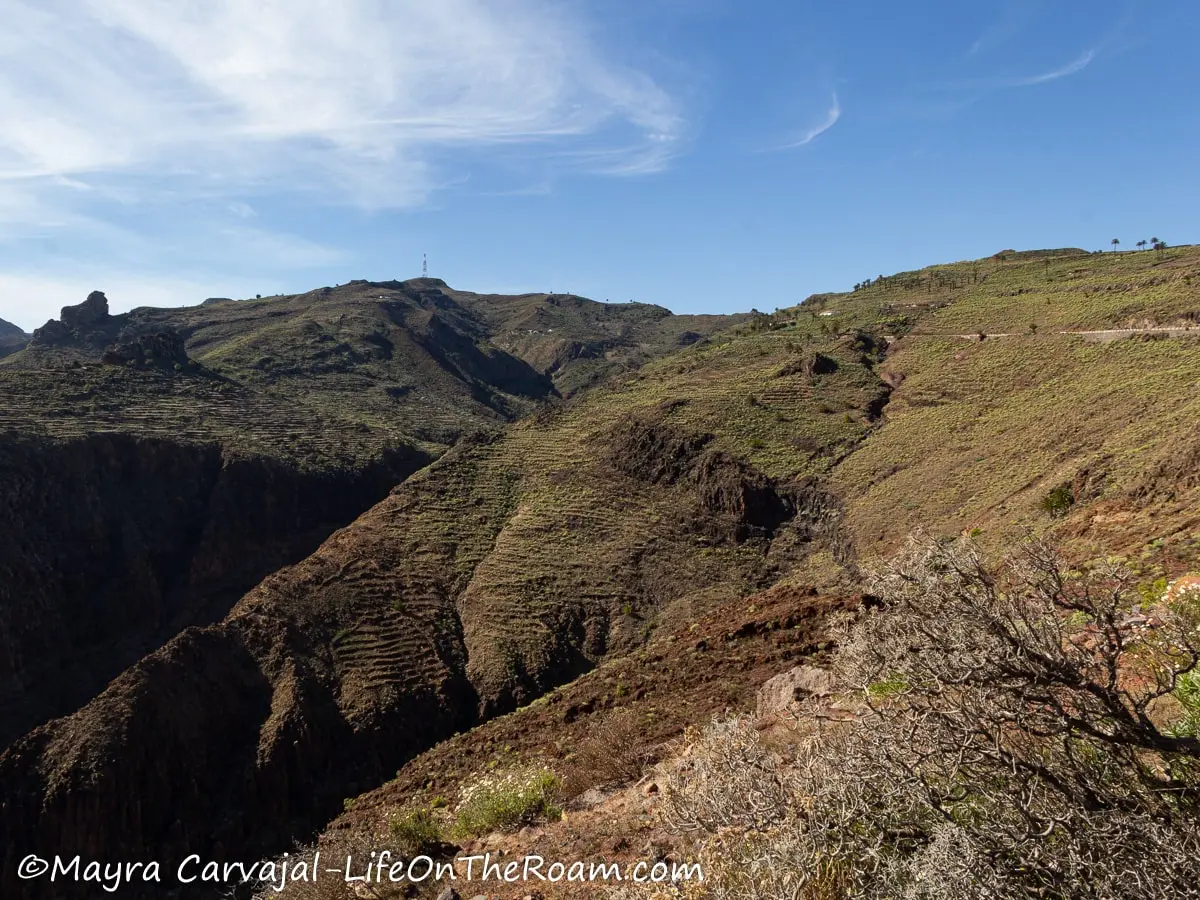
They needed to plant crops to eat (they cultivated mainly wheat and barley), but La Gomera is nothing but hills. How do you maximize the space? You use dry stone walls to build terraces, which you can see from here.
Easy as pie? Nope, but oh, the things you do to survive…
La Laja/Degollada de Peraza Viewpoint

This viewpoint (also known as La Laja lookout) is named after a gruesome event that happened here a long time ago. History tells that Peraza, the governor of La Gomera in the 15th century, was a terrible guy who earned the despise of the indigenous peoples of the island. One day they had it, they rebelled, and they said Off with his head! Degollada de Peraza means “Peraza’s beheading”.
Today, it’s a peaceful lookout from where you can see deep ravines and the change in vegetation as you transition to/from the cloud forest.
Los Roques Viewpoint
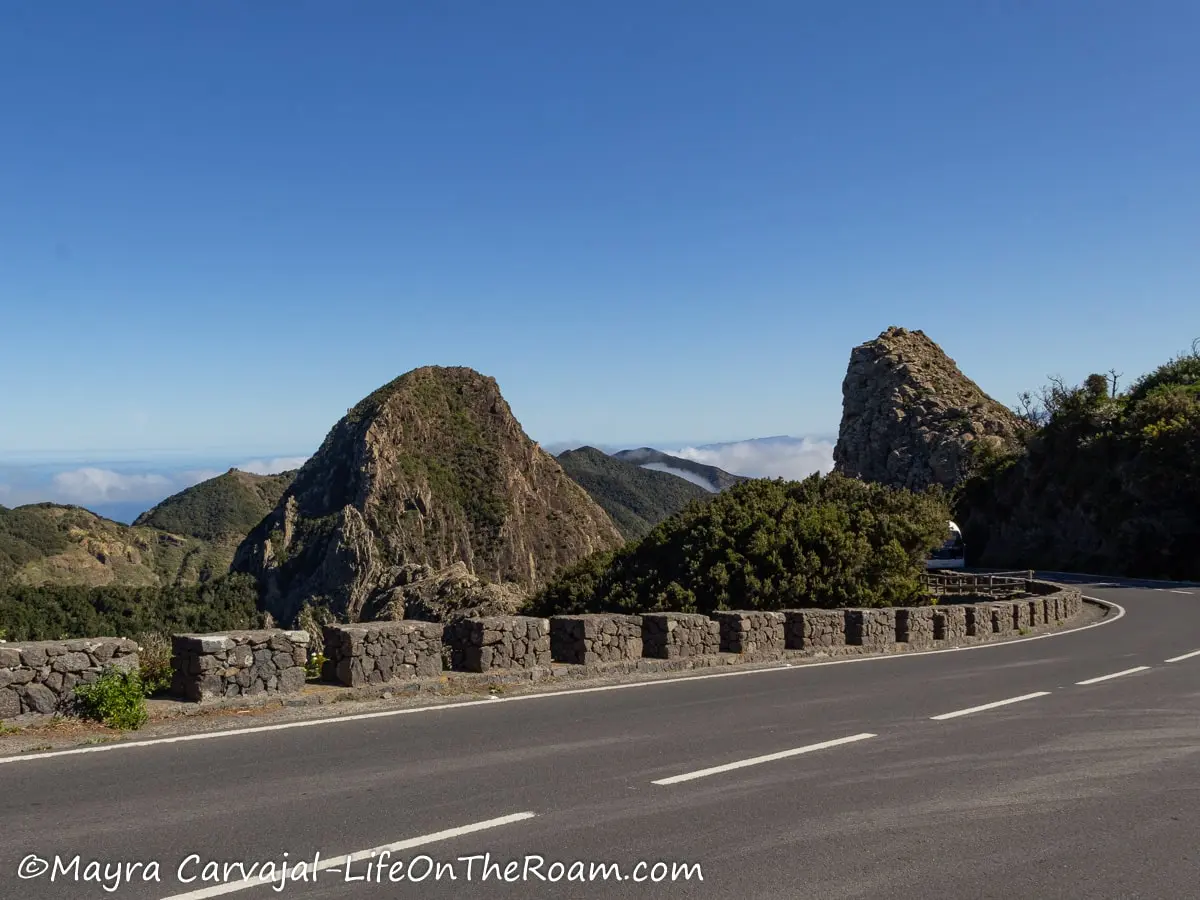
This is one of the most popular lookouts in La Gomera thanks to the humongous, ancient natural monuments that protrude from the mountain.
According to the site sign, millions of years ago a volcano formed this island, spewing lava through many fissures. Magma reached the mouth of some fissures and spilled over but in some cases, as it happened with these rocks, magma stayed trapped inside. Once it cooled down it created a super hard rock resistant to erosion.
What you see is the exposed solidified magma, which is now home to many endemic species to La Gomera.
The most famous out of the four rocks is the Roque de Agando with its pointy and tall shape, thanks to the nearly-solid magma pushed through a single conduit.
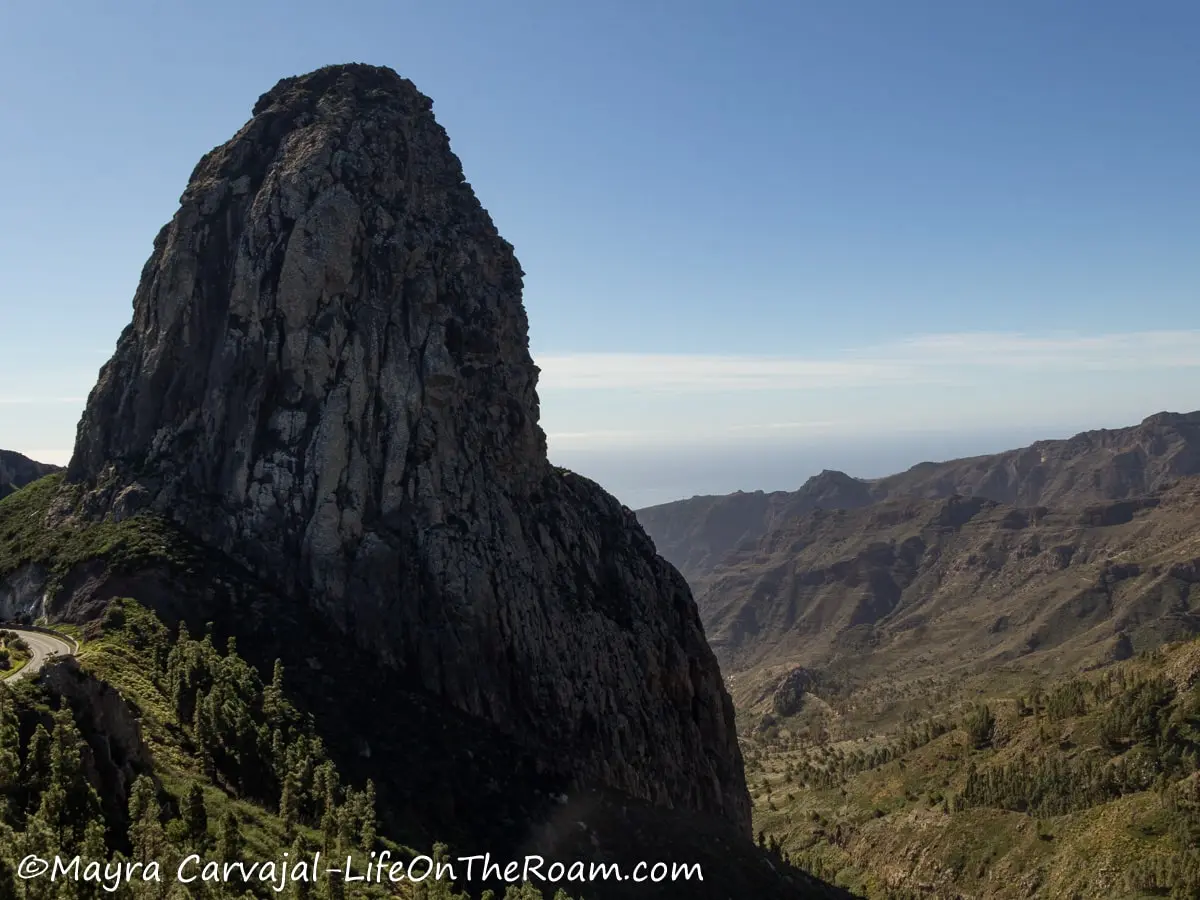
You can also see in the mountain layers of basaltic rock resembling a pistachio and chocolate Mille Feuille, where the Garajonay National Park sits on.
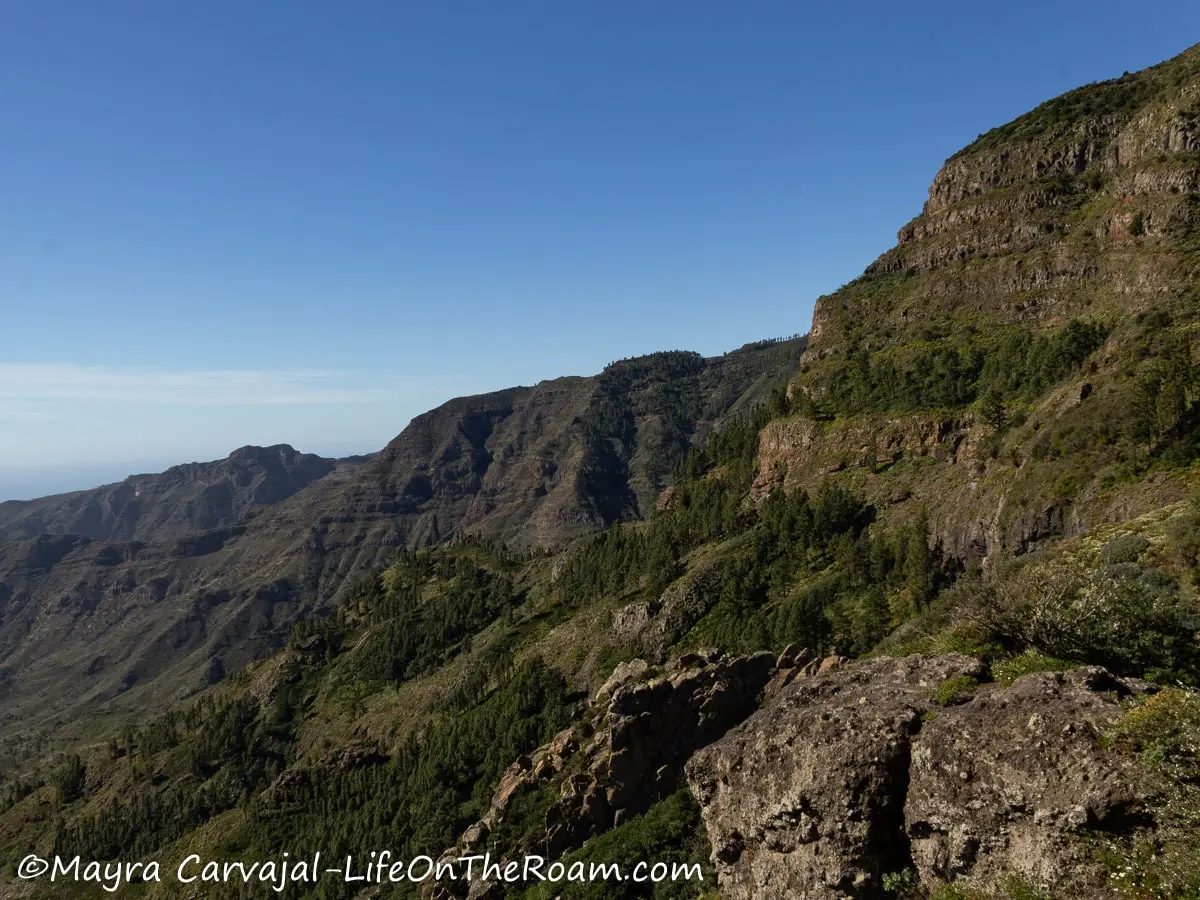
Many moons ago, all this was part of the caldera of a volcano.
Morro de Agando Viewpoint
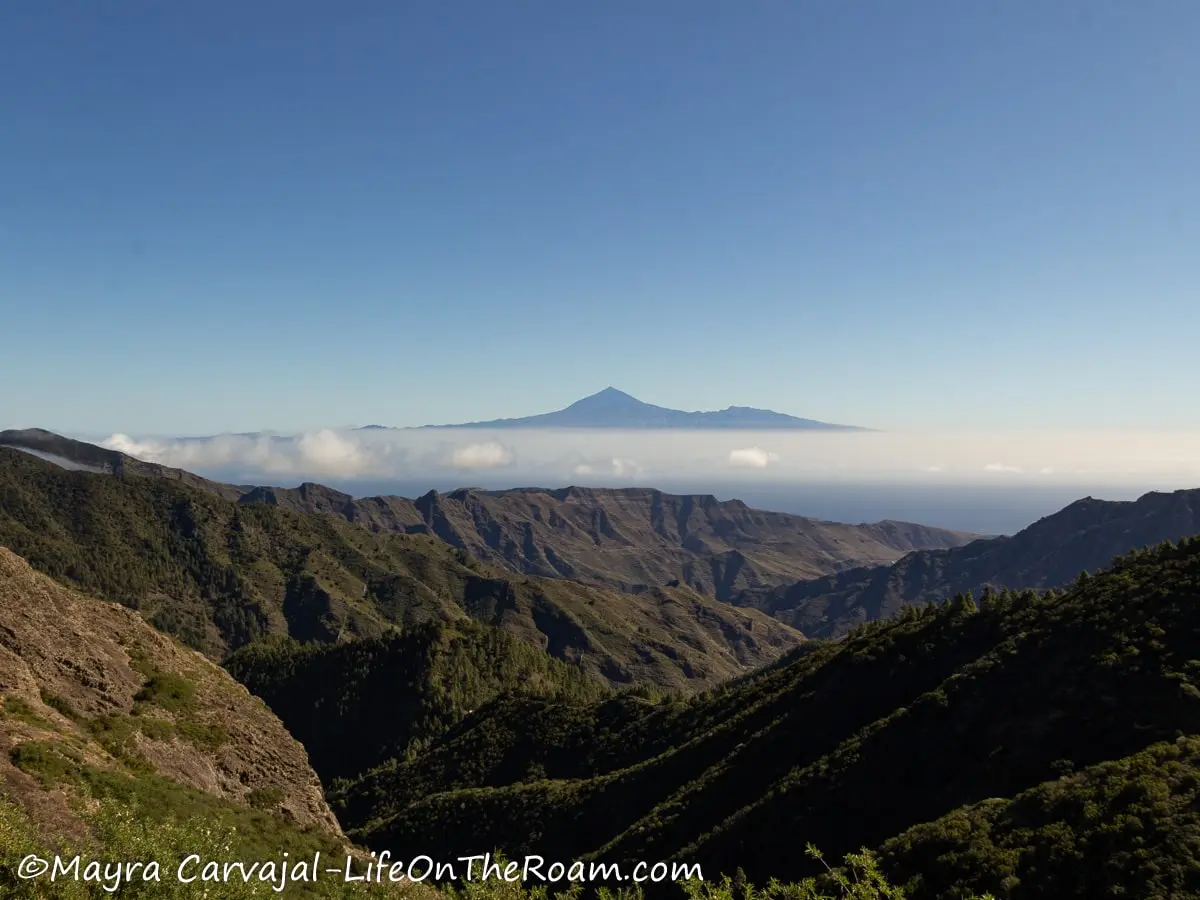
Within throwing distance of Los Roques lookout you’ll find the Morro de Agando lookout, where you can enjoy a birds’ eye view of the famous Roque de Agando.
Even though the view of rock formation is described as the belle of the ball, to me what takes the cake is what you see on my picture above: a view of Tenerife and the peak of Mount Teide in the distance (cloud permitting), with mountain ridges crisscrossing in the foreground.
If you’re staying in Tenerife and want to visit La Gomera for a day and you don’t feel like driving its serpentine roads you can take a full-day Jeep Safari excursion that includes lunch.
Book this tour, with a rating of 4.6/5 based on more than 350 reviews
El Bailadero Viewpoint
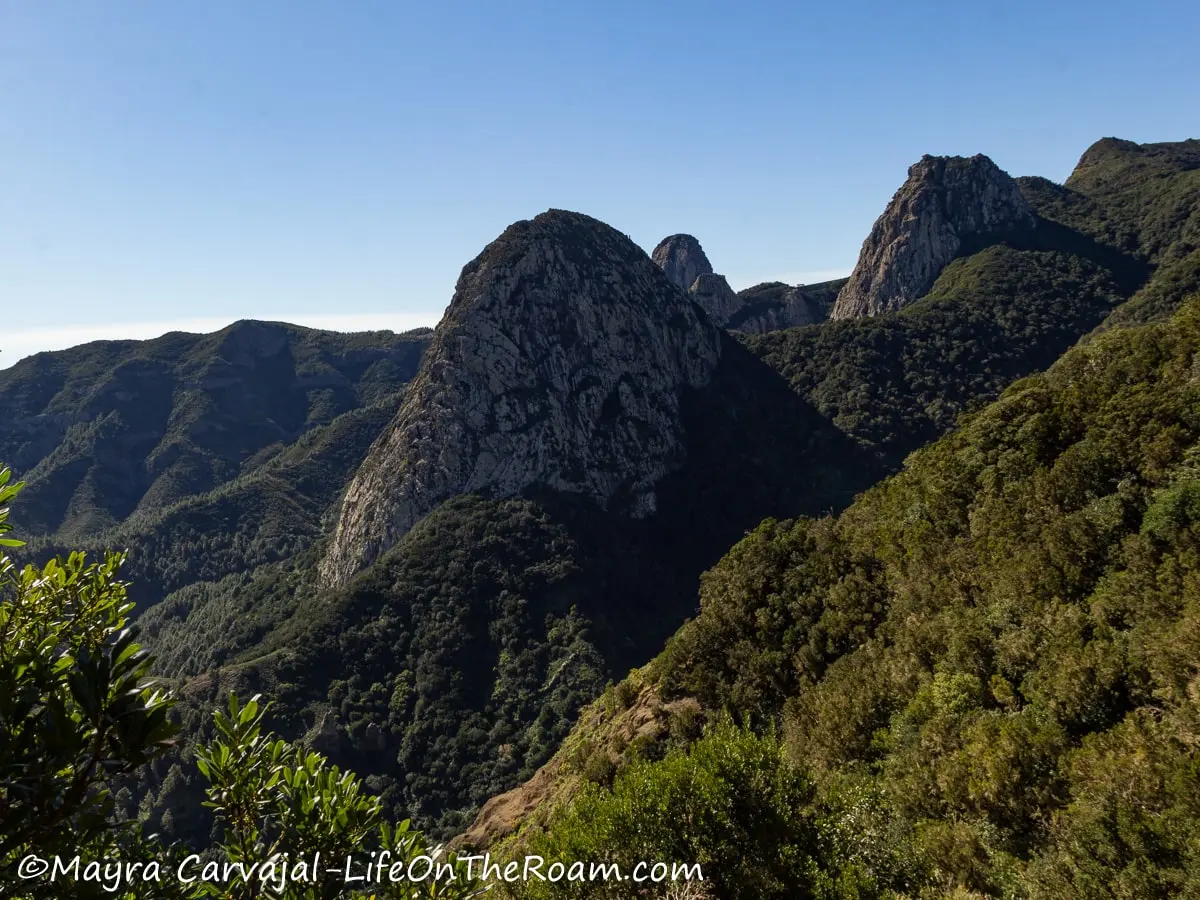
Sticking out like giant, gray Toblerone pieces inserted in a giant, green cake, the rock spurs you see here were formed by lava flows. Thanks to the erosion that has eaten away the rock you can even see the dykes (which look like rotten teeth) that transported the magma from the chamber to the surface.
El Rejo Viewpoint
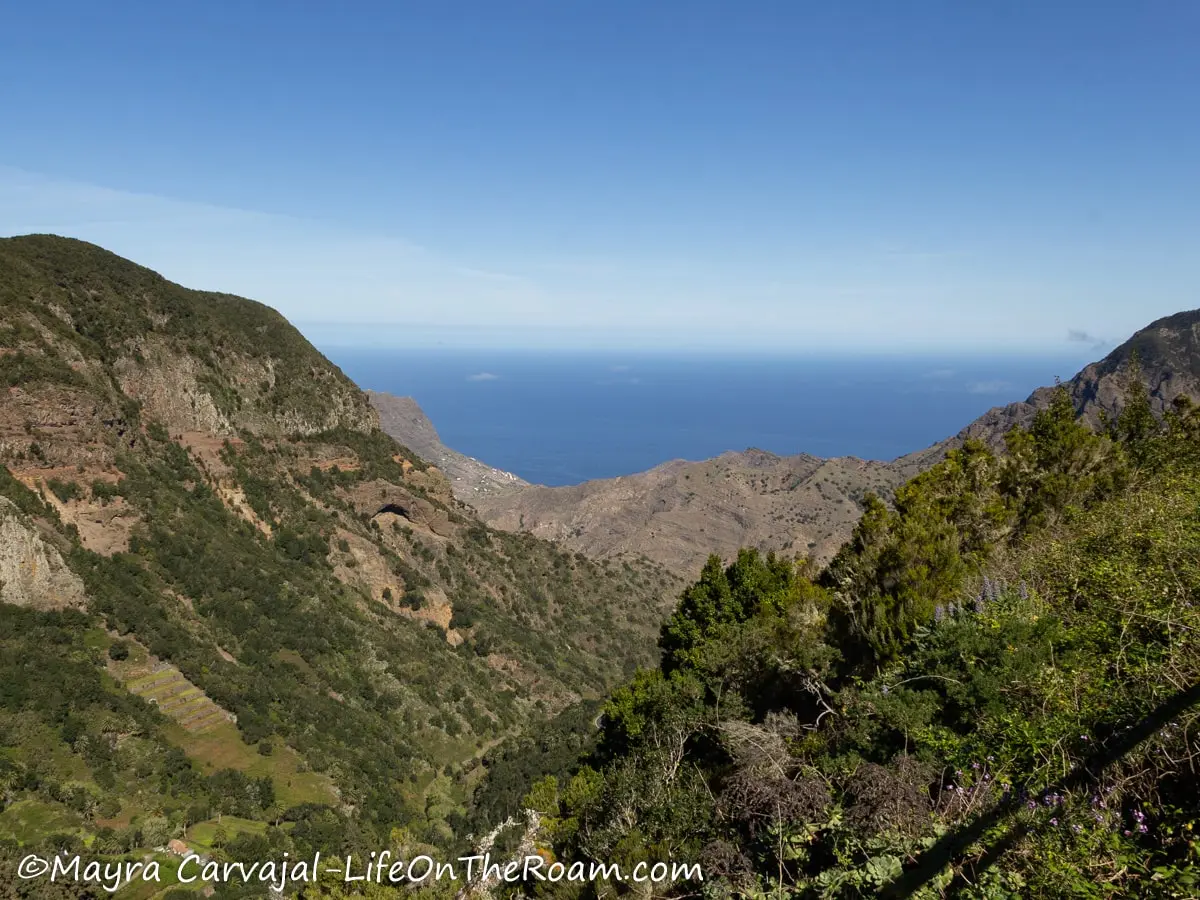
Mirador El Rejo overlooks a deep and wide ravine with a nice view of the sea in the distance. On the slopes of the ravine you’ll see greenhouse farms and abandoned terraces built to grow crops (less and less people work the land these days).
Thanks to the fertile volcanic soil and the springs originating from the cloud forest, agriculture has been the main economic activity in La Gomera. But it’s in decline.
Tajaque Viewpoint
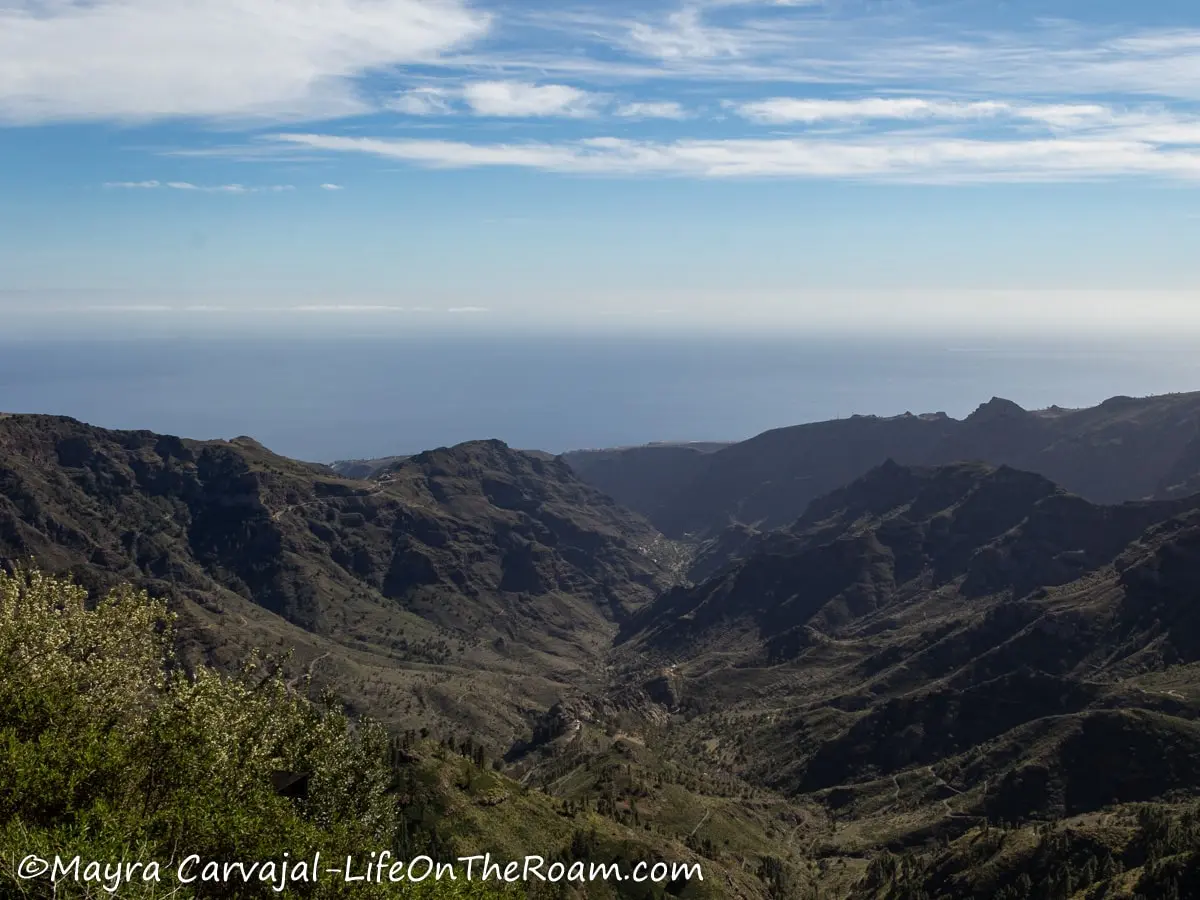
Sitting on the edge of La Gomera’s central plateau, the Tajaqué lookout offers a spectacular view of many ridges forming a web that converges in the centre and descends into the sea. This massive ravine is wrapped by the Benchijigua caldera.
Getting Around La Gomera
The most convenient way to go around La Gomera (and the one we used) is by car. There are buses (called guaguas -pronounced GHOUAH-ghouahs) that cover seven routes across the island, which may be an option if you’re staying for several days. However, they run on a limited schedule and arrival times aren’t always reliable.
You can check the routes on the Moovit app.
If you’re visiting for a day or a few days, renting a car is the best option. Let me warn you though, the roads are winding, with tight curves and steep slopes. If you don’t want to deal with that you can take a tour. But if you’re fine, renting a car will give you the advantage of stopping at whatever lookout you want for as long as you want, go for a hike, and hit the road again as soon as you’re done.
Check out rates and availability with Rental Cars
You can rent a car in La Gomera or, if you’re visiting from Tenerife or Las Palmas and rent a car there, you can bring it on the ferry. However, make sure to notify the rental car company as insurance may not cover any incidents off-island.
How to Get to La Gomera
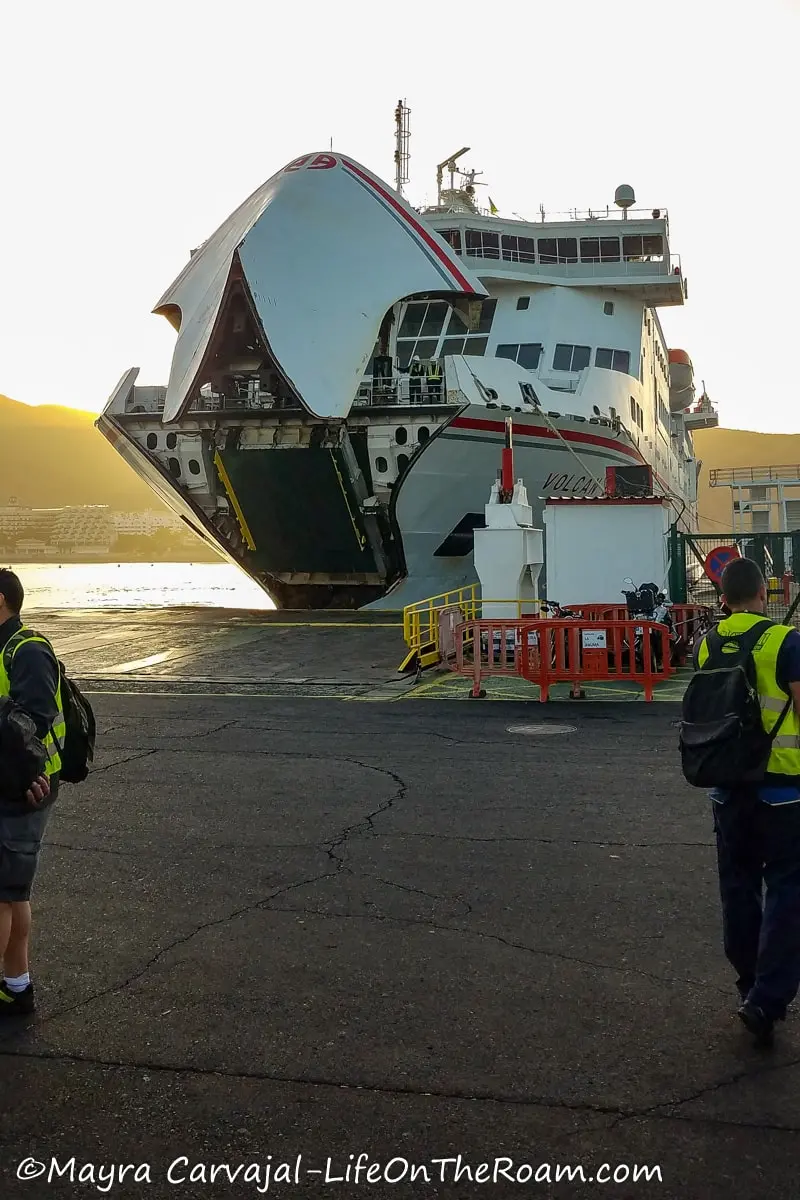
By Plane
You can only fly direct to La Gomera airport (GMZ) from within the Canary Islands. There are direct flights from the Tenerife North airport (TFN) and from Las Palmas de Gran Canaria (LPA).
By Boat
La Gomera car ferry travels between Los Cristianos (in the south of Tenerife) and San Sebastián de La Gomera in the morning, afternoon and evening.
The trip in the spacious and modern ferry, which has plenty of seating, a cafeteria, and an outside deck, takes around 50 minutes.
There are two lines with similar schedules: Fred Olsen (www.fredolsen.es) and Naviera Armas (www.navieraarmas.com).
La Gomera is a nature lover’s paradise where you can escape the crowds that swarm other popular Canary Islands’ destinations. The diverse landscape will wow you at every turn and it may be the kickstart to plan your next outdoor adventure.
YOU MAY ALSO WANT TO READ
BOOKING FLIGHTS AND ACCOMMODATIONS
Book your flight without losing your shirt
We check Momondo to find great deals to book our flights. Also, check Great Escape: it combines the listings from Expedia, Kiwi, Kayak, (and Skyscanner on the premium service) to find the best airfares.
To find a place to stay for less
Booking.com: this site combines everything under the sun. You’ll find hotels, apartments, B&B, hostels, rooms, etc., with all sort of filters to make your search a breeze.
Hotwire: the first site I check when we plan to stay at a hotel for a few nights. You can save anything from 20% to 60%. Use the search filter to find what you want and you’ll end up with three listings that match your criteria. You’ll know which one you’ll get after you book. If you can handle a little bit of uncertainty you can score big savings.
House Sitting: you take care of people’s pets and house for free while staying for free. It’s the closest thing to experiencing a place “like a local”. But it comes with responsibilities… Are you an animal lover? It may become your new way to travel.
To get travel insurance
SafetyWing: travel medical insurance that gives us peace of mind knowing that we’re covered in case of emergency. It’s convenient, affordable, and suitable for digital nomads who spend a long time outside their home country.
Check the full list of travel resources on my Resource Page for more options and savings
